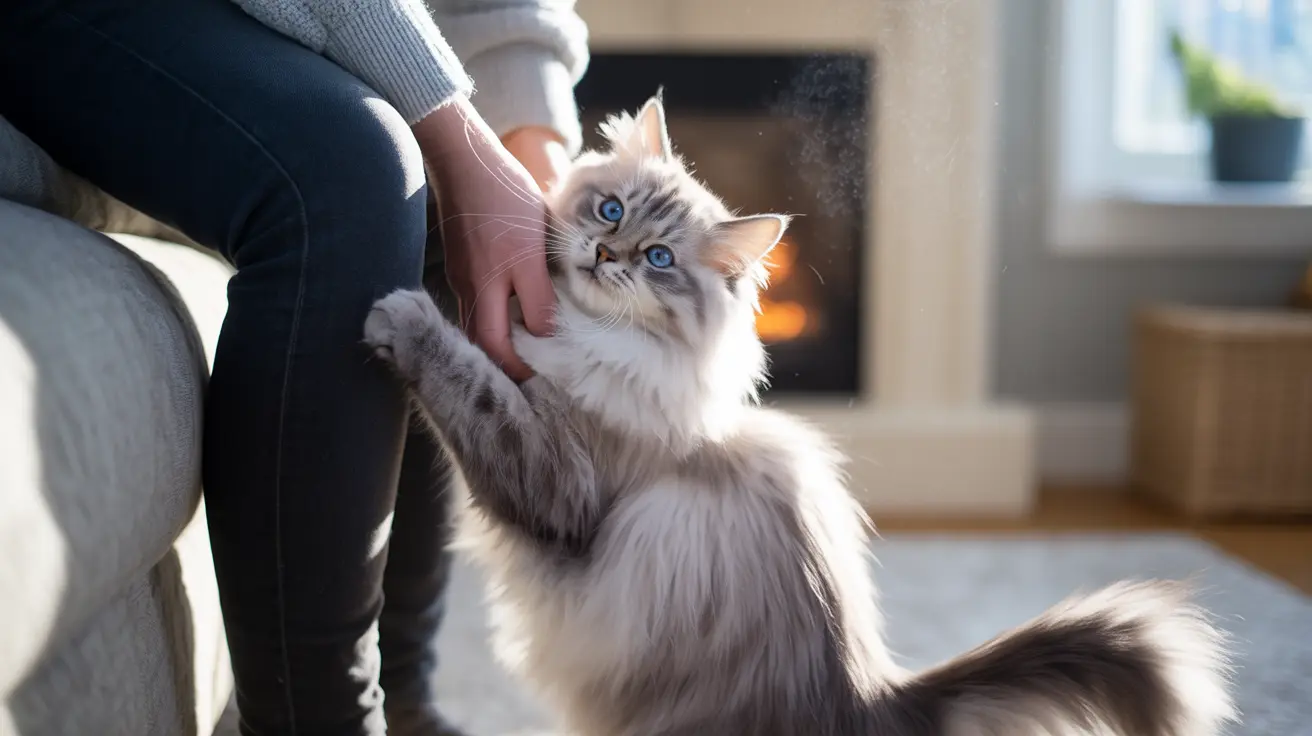The Science of Scent Marking
Cats are equipped with specialized scent glands located throughout their bodies - on their cheeks, forehead, chin, tail base, and paws. When a stray cat rubs against your legs, it's actually depositing pheromones, creating an invisible but powerful scent marker.
These pheromones serve multiple purposes in the feline world. They help cats:
- Mark territory
- Create familiar environments
- Communicate with other cats
- Establish ownership
Social Bonding and Trust Signals
When stray cats rub against your legs, they're often initiating a social connection. This behavior, known as "bunting," is particularly significant coming from a stray cat, as it indicates a level of trust that shouldn't be taken lightly.
A stray cat that repeatedly engages in this behavior might be:
- Showing acceptance of you as non-threatening
- Attempting to create a social bond
- Expressing comfort in your presence
Resource Seeking Behavior
Stray cats often learn that human interaction can lead to food, shelter, or care. The leg-rubbing behavior may be strategically employed to:
- Signal hunger or need
- Request attention
- Establish a routine of care
- Create a beneficial relationship with humans
The Difference Between Stray and Feral Cat Behavior
It's important to distinguish between stray and feral cats when interpreting this behavior. Stray cats - those that were once domesticated - typically display more social behaviors and are more likely to approach humans. Feral cats, having never been socialized with humans, may rub against legs but remain wary of direct contact.
Understanding this distinction is crucial for appropriate response and interaction.
Safety Considerations and Response
While it's heartwarming when a stray cat shows trust by rubbing against your legs, it's essential to respond appropriately:
- Avoid sudden movements
- Don't immediately attempt to pet the cat
- Observe other body language signals
- Respect the cat's space and boundaries
Frequently Asked Questions
Why do stray cats rub against my legs when they meet me?
Stray cats rub against your legs to mark you with their scent, gather information about you through their sensitive nose, and potentially establish a social connection. This behavior can also be a learned response associated with receiving food or care.
Does a stray cat rubbing against you mean it trusts you or wants something?
It can mean both. While rubbing is often a sign of growing trust, it's also frequently associated with resource seeking behavior. The cat may be expressing comfort with your presence while simultaneously hoping for food or shelter.
How do cats use rubbing to mark their territory on humans?
Cats have scent glands on their face, body, and legs that release pheromones when they rub against you. This marking serves to claim you as part of their territory and create a familiar scent profile they can recognize later.
What is the difference between stray and feral cats rubbing behavior?
Stray cats typically approach more readily and may engage in extended rubbing behavior, while feral cats are more cautious and may only briefly rub before retreating. Strays are also more likely to follow up with other friendly behaviors.
Should I pet a stray cat that rubs against my legs, or could it be a warning?
Exercise caution before petting a stray cat, even if it rubs against you. While rubbing is generally a friendly gesture, cats can quickly become defensive if they feel threatened. Wait for additional signs of trust and comfort before attempting physical contact.
Conclusion
The behavior of stray cats rubbing against human legs is a fascinating display of feline communication and social interaction. While it often indicates a positive connection, understanding the complexity behind this behavior helps us respond appropriately and build safer, more meaningful relationships with stray cats in our communities.






